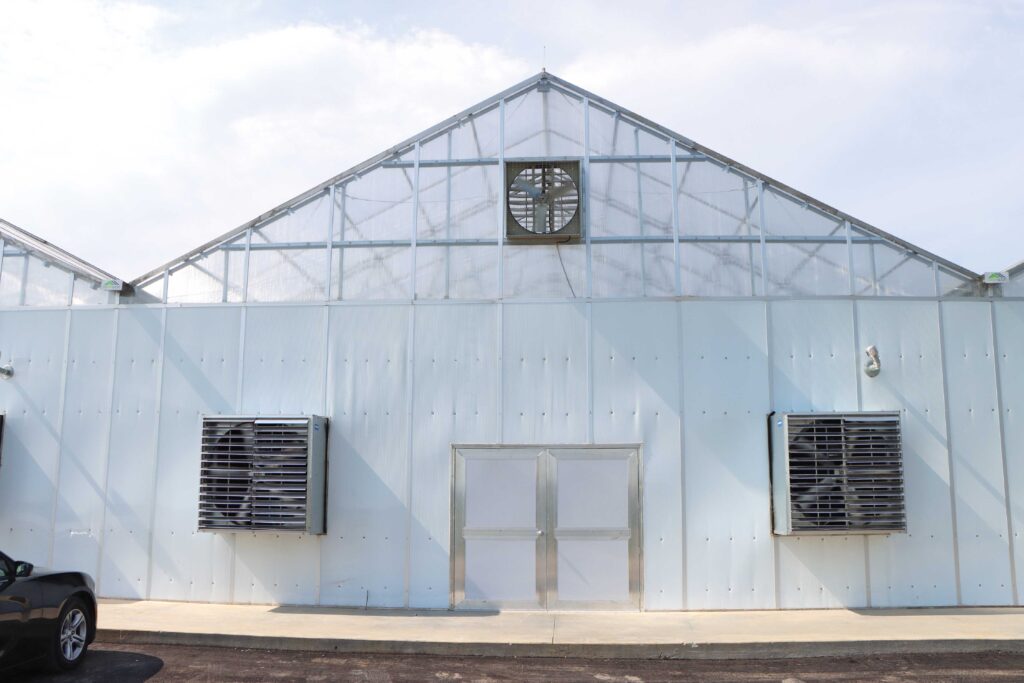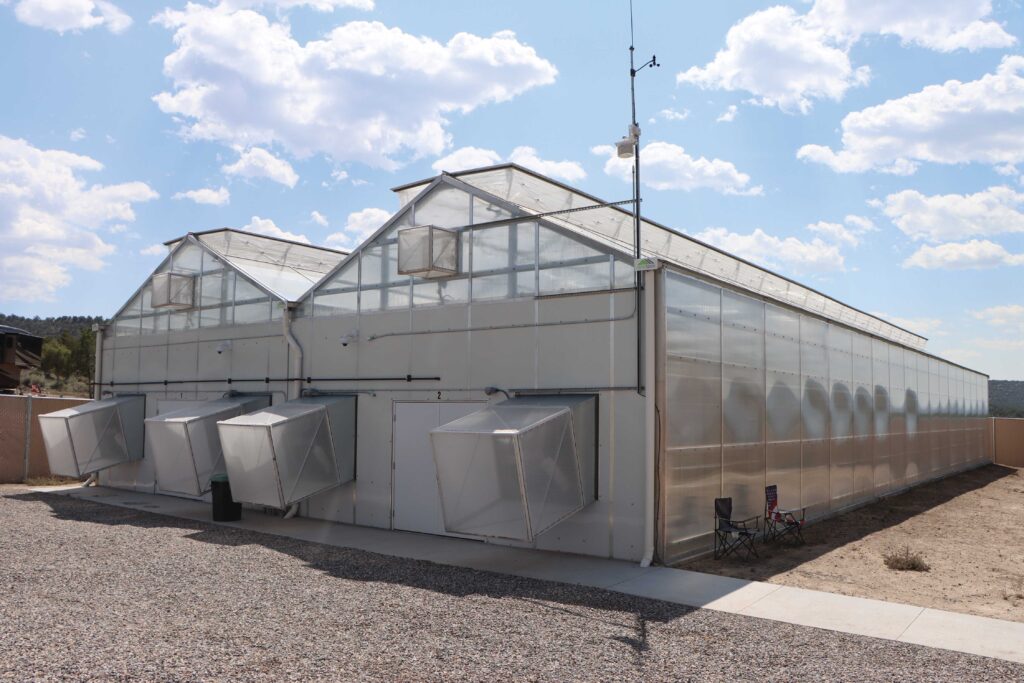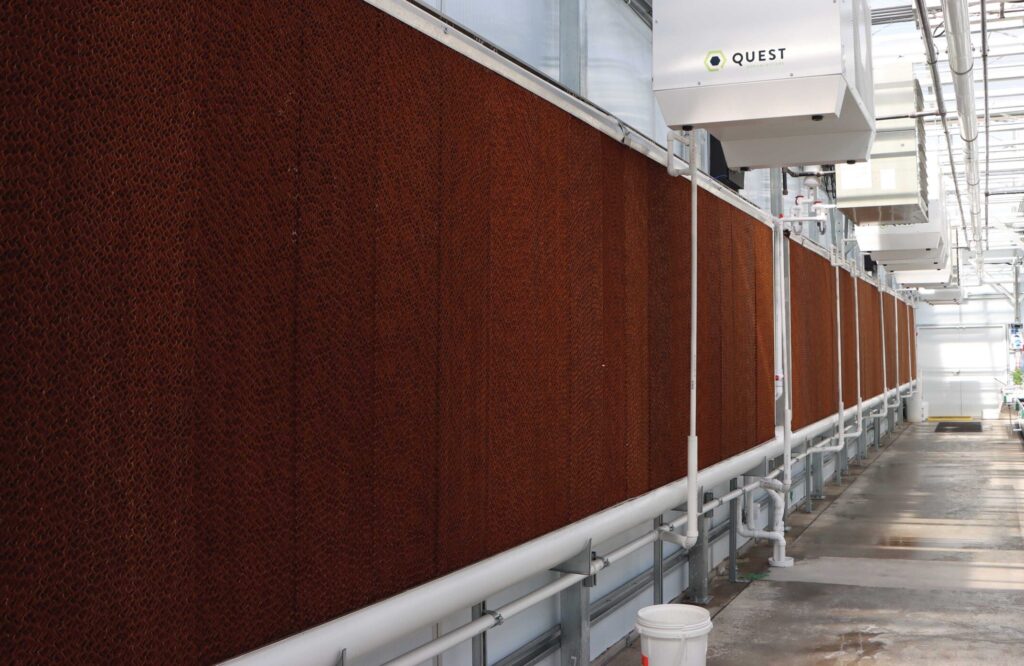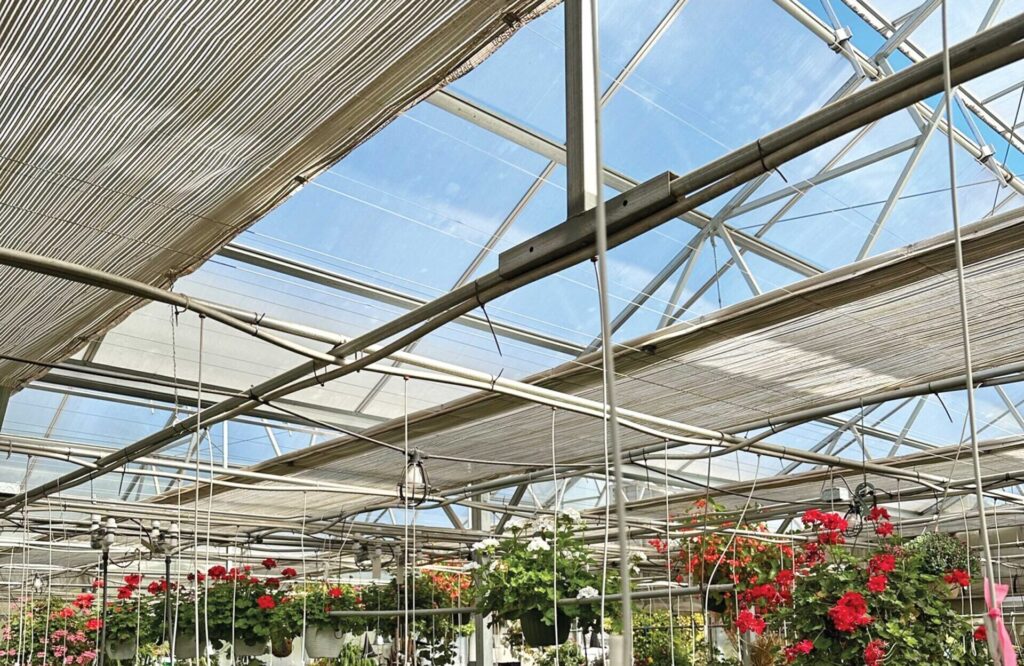Cooling A Greenhouse: Everything You Need To Know To Beat The Heat
Maintaining success in controlled environment agriculture is a challenge that evolves throughout the year for growers. It requires them to adapt their greenhouse environment based on the conditions outside, so they can maintain an ideal micro-climate for their crops.
During the summer months, growers need the right systems in place to bring temperatures down, cooling their greenhouse in a reliable, yet energy-efficient manner. While some operations do what they can to get by, using portable coolers, box fans and more to sustain a viable growing environment, this can get expensive and will never allow plants to reach their full potential.
Instead, the best approach is to set up a greenhouse correctly from the start, or to bring in a reputable greenhouse manufacturer who can retrofit the structure. This way, growers will have the tools they need to get a handle on greenhouse temperatures and other factors, like humidity.
Whether it’s outfitting a brand new structure or upgrading an existing one, cooling a greenhouse efficiently requires the right mixture of airflow, cooling power and shading. Using this blog, growers can learn more about the basics of proper ventilation and air circulation, the benefits of cooling systems and shade systems, as well as how to create a perfect balance that makes cooling a greenhouse simple and economical.
VENTILATION & AIR CIRCULATION
Whether growers live in an area with high humidity or a more arid region, the first key to cooling a greenhouse is optimizing airflow. This can be accomplished through adequate ventilation and air circulation, which largely depends on having the right equipment and an efficient greenhouse design.
Once growers have their ideal set up in place, they can create the air exchange needed to prevent a buildup of stagnant, hot air and excess humidity that lead to the occurrence of pests and disease. In the hottest conditions, growers should aim for one air exchange per minute, with the minimum being one every two minutes.

Sign Up Now To Learn More
What Is The Best Way To Set Up Ventilation In A Greenhouse?
The most effective way to ventilate a greenhouse is with a combination of passive and active ventilation. By using natural airflow from the outdoors and mechanical ventilation equipment in unison, growers should find that cooling a greenhouse can be relatively simple and low-cost.
Passive ventilation relies on the wind, using vents in the roof or walls to draw fresh air into the greenhouse, while simultaneously releasing hot, stale air back outside. A large part of this exchange is accomplished through the chimney effect; wherein hot air rises to the top of the structure and cooler air stays towards the bottom. As a result, roof vents tend to be far more efficient for passive ventilation than side vents.

When cooling a greenhouse with roof vents, growers can benefit greatly from installing automatic vent openers. These are designed to open and close on their own within preset temperature ranges, allowing growers to streamline their passive ventilation efforts and keep the air exchange rate at an adequate level. For the best results, growers should position these vents as high on the roof as possible and install them every fifteen to twenty feet.
To help bring fresh air into their greenhouse and keep air circulating, growers will then need to take advantage of active ventilation by incorporating fans. In particular, growers should utilize exhaust fans and horizontal airflow fans (HAF).
Exhaust fans are installed on the end walls of a greenhouse and work by pulling air from the outdoors into the structure. For growers cooling a greenhouse in the hottest regions, the focus should be on getting a high performance exhaust fan that combines maximum air output with low energy consumption. Some options are even designed with a cone, which reduces air resistance and offers increased efficiency in areas that require larger volumes of air to be moved.
HAF fans help circulate air across a greenhouse, producing a horizontal airflow pattern that mixes warm air near the gable area with cooler air at the ground level. These help growers avoid warm air pockets and establish more uniform greenhouse temperatures, so plants in every part of the structure grow under the same environmental conditions.
Get Some Additional Tips On Cooling A GReenhouse
DEDICATED COOLING SYSTEMS
In addition to maintaining a healthy air exchange, growers will also benefit from incorporating a cooling system that actively lowers greenhouse temperatures. One of the most effective cooling methods is the evaporative cooling system.
Traditionally, many greenhouses employ the fan and pad system, which uses exhaust fans to pull hot air in from the outdoors, then cools it with the help of water-soaked pads. As that air passes through the system, the chilled pads absorb heat and lower the air temperature, before distributing it across the greenhouse at crop level.
The result is a powerful cooling option that supplies valuable air movement and can lower a greenhouse’s temperature by up to 20 degrees, while only consuming a very small amount of energy. This solution is especially convenient for cooling a greenhouse, because the system is completely sealed and requires no additional pumps, filters or internal plumbing – just a reliable connection to a grower’s water supply.
As an alternative, growers may also consider installing a fogger or misting system inside their structure. Misting systems work in a similar fashion to fan and pad systems, cooling a greenhouse through the process of evaporation. Water droplets are emitted through nozzles, and as those droplets evaporate in the heat, they spread through the air and cool down the growing area.

It’s important to note that evaporative coolers and misting systems are best suited to cooling a greenhouse in more arid regions, since they release additional moisture into the grow space. If a structure is already located in a humid region, that extra evaporated water can further exacerbate the issue and make the occurrence of disease more likely.
COOLING A GREENHOUSE WITH SHADE SYSTEMS
Once the other cooling elements have been taken care of, growers can supplement their efforts with a shade system. A high-quality shade system gives growers a cost-effective and energy-efficient way of cooling their greenhouse, while also taking some of the load off their ventilation and cooling equipment.
Greenhouses depend on sunlight for plant growth, which comes with a number of benefits, including significant energy savings by limiting the need for artificial light fixtures. However, the light from the sun also produces heat that gets trapped inside a greenhouse, causing temperatures to rise. This can be beneficial for winter growers trying to heat up their space, but for growers dealing with extreme summer temperatures, it presents another obstacle to navigate.

To be successful in cooling their greenhouse, growers will have to choose which type of system they want to install, as well as determine the type of material that works best for them. Exterior shade systems can be effective, because they intercept light before it even enters the greenhouse, but they are generally more complex and costly. An internal shade system is more common and comes in two primary styles: gutter-to-gutter or truss-to-truss.
A flat truss-to-truss system tends to see the most widespread use, as it reduces the area of greenhouse that needs to be cooled, and doesn’t form the same bulkier bundles of shade material that gutter-to-gutter systems do when retracted.
Shade systems can be equipped with a number of materials that either vary in shade gradient or serve different purposes. Growers can opt for a more traditional shade cloth that’s UV-resistant and reduces light intensity, or implement a reflective shade material, which is specifically designed to block heat and light from entering a grow space. With either option, growers should be able to find material ranging from 30% to 70% shade, and choose the one that best suits their needs.
Though it may seem daunting, cooling a greenhouse doesn’t need to be as complicated as it’s made out to be. With a balanced ventilation setup, dedicated cooling system and shade material for additional protection, growers can adapt their greenhouse environment to combat the rising temperatures and keep plants thriving.
To learn more about cooling a greenhouse and maintaining your ideal growing environment, call or Request a Quote today.
Related Articles
Tips To Improve Grow Room ANd Greenhouse Temperature Control
Managing the temperature inside of the grow room or greenhouse is essential for plants to grow to their full potential.
Humidity And Greenhouse Climate Control: A BRief Introduction
When growing in a greenhouse, humidity can become a serious factor in the success of your crop.
The Summer Sun Is Overheating Your GReenhouse, Here's How TO Cool It Down
In regions where the summertime temperatures are especially high, it is critical to maintain greenhouse temperatures at the desirable level, as few crops prosper in excessively hot temperatures.
Greenhouse Temperature Control: The Guide To An Evaporative Cooling System
Also known as a commercial swamp cooler, an evaporative cooling system provides powerful cooling ability by employing natural scientific processes.
A Climate Controlled Greenhouse Is The Ideal Setting For Controlled ENvironment Agriculture
When growers employ a climate controlled greenhouse for controlled environment agriculture, they can give their business, and profits, the much needed boost they’re looking for.
Ventilation Methods: Low-Tech To Automated High-Tech
Greenhouse humidity and temperature can quickly become the enemy of production if growers do not implement proper ventilation within their system.

